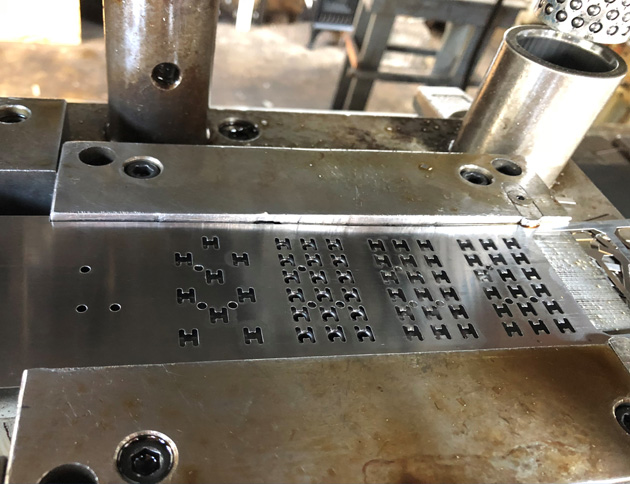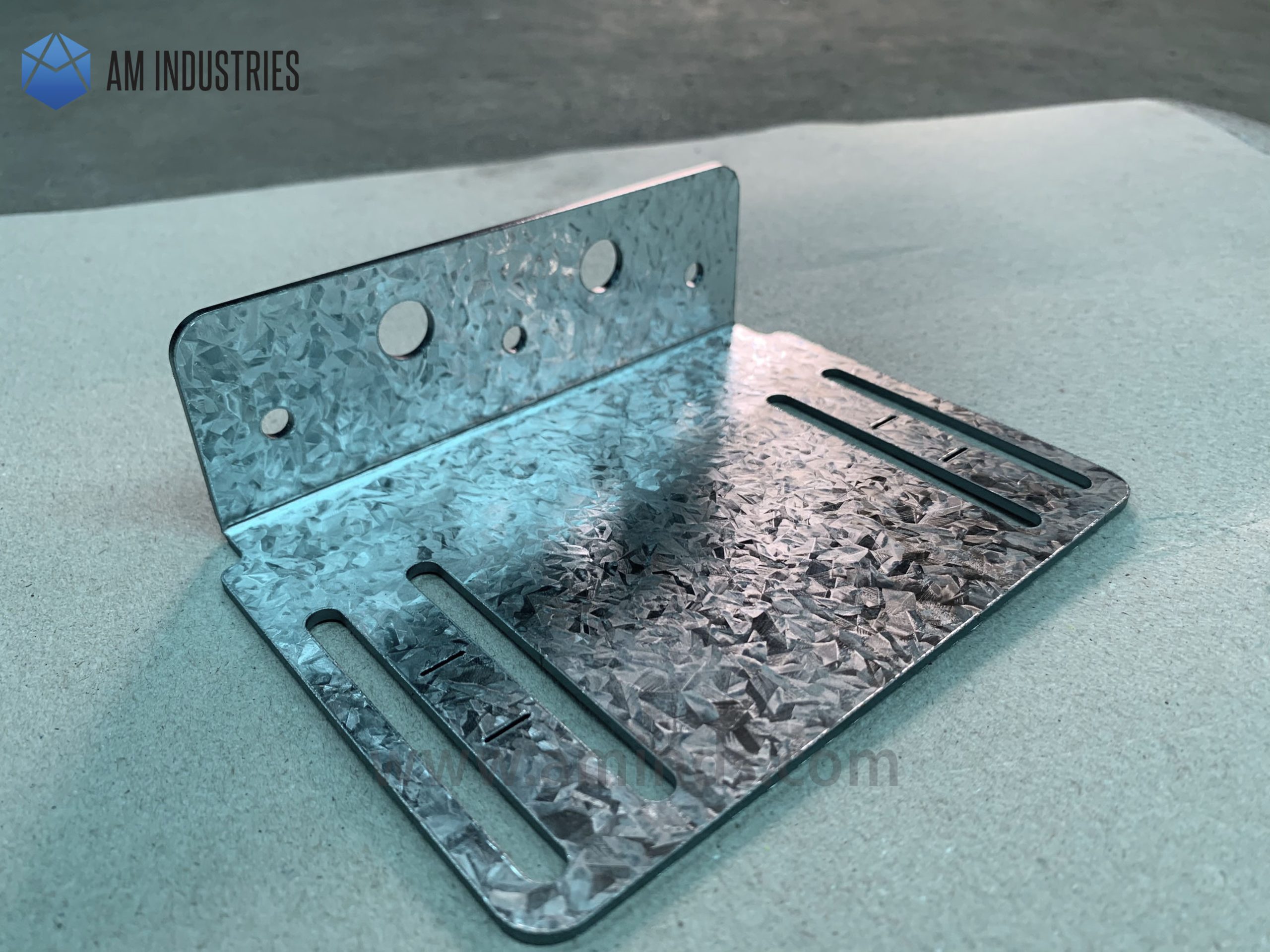Making Best Use Of Effectiveness and Quality With Cutting-Edge Steel Stamping Strategies
In the realm of metal stamping, the pursuit of functional excellence through the combination of cutting-edge methods is extremely important. As markets progress and demands for accuracy and efficiency rise, staying ahead of the curve becomes a strategic imperative. By accepting sophisticated modern technologies and procedure enhancements, organizations can open new degrees of efficiency and product high quality. The junction of innovative metal stamping methodologies, automated systems, stringent quality controls, and lean manufacturing principles supplies an alluring glance into the future of production. This convergence holds the pledge of not simply meeting yet surpassing market standards, setting the stage for exceptional performance and consumer contentment.
Advanced Steel Stamping Technologies
In the world of metal stamping, the integration of cutting-edge innovations has changed the sector, improving accuracy and effectiveness in manufacturing processes - Metal Stamping. Advanced metal stamping innovations have played a pivotal duty in boosting the abilities of producers, enabling even more detailed designs and higher production rates
Among the most significant advancements in metal marking modern technology is the application of computer mathematical control (CNC) systems. CNC systems make it possible for specific control over the marking process, causing regular and accurate production of facility parts. Furthermore, using servo presses has actually produced renovations in power performance and lowered cycle times, additionally optimizing the production procedure.
In addition, the combination of automation and robotics has structured steel stamping operations by boosting performance and lowering the danger of mistakes. Automated systems can carry out jobs with speed and accuracy, leading to improved total effectiveness in the assembly line.
Automated Procedures for Effectiveness
Use of automated procedures in steel marking procedures has substantially enhanced effectiveness and efficiency in making centers (Metal Stamping). Automated systems have actually reinvented the metal stamping sector by simplifying procedures, reducing hands-on intervention, and decreasing the margin of mistake. These automated solutions incorporate a series of technologies, including robot arms, CNC equipments, and digital control systems, that job cohesively to implement elaborate marking jobs with accuracy and speed
One primary advantage of automated processes in metal stamping is the constant top quality they provide. By getting rid of human error and variations in manufacturing, automated systems make certain that each stamped component fulfills specific specs with minimal defects. Moreover, automation makes it possible for continual procedure, dramatically reducing downtime for device modifications and maintenance, thereby making the most of total performance.
In addition, automated processes enhance safety in metal stamping operations by lessening the requirement for manual handling of heavy products and sharp devices. This not only safeguards workers however likewise adds to a more streamlined and efficient workflow. To conclude, the combination of automated processes in steel stamping procedures is critical for achieving optimum efficiency, quality, and safety and security standards in modern manufacturing settings.
High Quality Control Steps in Marking
Provided the focus on consistent top quality and effectiveness attained via automated procedures in steel marking operations, implementing durable quality control steps ends up being essential to ensure and support criteria precision in stamped parts. Quality control in metal stamping entails a multi-faceted approach to ensure the integrity and precision of the last products. By integrating these steps into steel stamping procedures, suppliers can constantly create premium stamped components that satisfy the rigorous needs of contemporary industries.
Enhancing Precision Through Technology
To accomplish unmatched precision in metal stamping processes, introducing innovations are continuously being established and incorporated right into the manufacturing operations. Advanced technologies such as laser cutting systems and computer system numerical control (CNC) machines have actually revolutionized the way metal components are stamped with utmost precision. By utilizing laser reducing modern technology, suppliers can attain intricate and complex layouts with micron-level accuracy, making sure that each stamped component meets the most strict top quality criteria.

Furthermore, the usage of simulation software program permits suppliers to evaluate and enhance stamping procedures prior to actual manufacturing, determining prospective locations for improvement and fine-tuning parameters to accomplish optimum precision. By embracing these ingenious modern technologies, producers can improve precision, increase effectiveness, and deliver top quality stamped items that meet one of the most rigid requirements of contemporary industries.
Implementing Lean Manufacturing Practices
Integrating lean production methods into metal stamping procedures can cause structured manufacturing procedures and enhanced total performance. By focusing on removing waste, enhancing resources, and continuously enhancing processes, steel marking firms can improve productivity and top quality while reducing costs. One vital facet of carrying out lean manufacturing in steel marking go now is the focus on creating a efficient and smooth workflow. This entails organizing workstations, standardizing processes, and lessening unnecessary movements to make best use of efficiency.
Furthermore, lean manufacturing techniques urge a society of continual enhancement within the organization. By equipping workers to identify and resolve inefficiencies, companies can make incremental modifications that result in substantial performance gains over time. Applying tools such as 5S, Kanban systems, and worth stream mapping can help enhance procedures, reduce lead times, and boost total quality in metal marking procedures.
Conclusion
To conclude, the use of innovative steel stamping innovations, automated procedures, quality control measures, innovation for accuracy enhancement, and execution of lean production methods are essential for maximizing effectiveness and quality in steel stamping operations. These strategies Resources ensure that products are generated with precision, uniformity, and cost-effectiveness. By integrating these innovative methods, manufacturers can stay affordable in the market and fulfill the demands of customers successfully.

Given the emphasis on consistent top quality and performance accomplished through automated processes in steel marking procedures, carrying out robust quality control steps comes to be vital to make sure and promote criteria accuracy in stamped components. Carrying out tools such as Five, Kanban systems, and value stream mapping can assist simplify operations, reduce lead times, and improve general top quality in metal marking processes.
In verdict, the application of advanced metal marking innovations, automated processes, top quality control actions, development for precision improvement, and implementation of lean manufacturing practices are critical for making the most of performance and high quality in steel marking procedures.